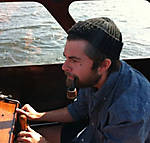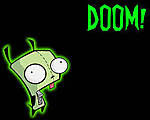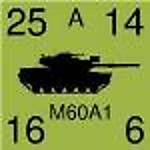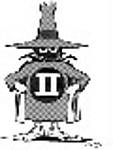Beeing fairly new to modeling and beeing initially extremely impressed by the "spanish" school I must say I'm starting to sway over to the less rust / not overdone side.
I also think there are plenty of opportunity to improve that particular "school"(realism?). Better material definition, correct values, hue, modulation (yes, i would say it should go into the realism category when done right).
While it's easy to be impressed by the sheer amount of detail and "stuff" on a heavily weathered model (to the point where the eye gets lost in it all) there is definitely something appealing to see a perfectly executed finish with just a bare minimum of weathering. Maybe it's a purist thing where one starts to see the effort put into creating that "simple" finish?
AFV Painting & Weathering
Answers to questions about the right paint scheme or tips for the right effect.
Answers to questions about the right paint scheme or tips for the right effect.
Hosted by Darren Baker, Matthew Toms
Rust streaks on AFVs - why?

Motives

Joined: October 15, 2013
KitMaker: 444 posts
Armorama: 428 posts

Posted: Monday, February 23, 2015 - 01:11 AM UTC
M4A1Sherman

Joined: May 02, 2013
KitMaker: 4,403 posts
Armorama: 4,078 posts

Posted: Monday, February 23, 2015 - 05:49 PM UTC
Quoted Text
Beeing fairly new to modeling and beeing initially extremely impressed by the "spanish" school I must say I'm starting to sway over to the less rust / not overdone side.
I also think there are plenty of opportunity to improve that particular "school"(realism?). Better material definition, correct values, hue, modulation (yes, i would say it should go into the realism category when done right).
While it's easy to be impressed by the sheer amount of detail and "stuff" on a heavily weathered model (to the point where the eye gets lost in it all) there is definitely something appealing to see a perfectly executed finish with just a bare minimum of weathering. Maybe it's a purist thing where one starts to see the effort put into creating that "simple" finish?
Yeah! I'll agree with that! Even with all the experience that I've accumulated over 56-years time, (I started when I was 5- Boy what a mess I made!
 ) I find that creating something that is supposed to have that "simple finish", turns out to be anything BUT simple in execution!
) I find that creating something that is supposed to have that "simple finish", turns out to be anything BUT simple in execution! As I've mentioned before, I find myself going through nearly all phases of pre-shading with a dark base coat, successively applying the various lighter and darker mediums, i.e, going through the various steps involving the "Fooling of the eye", just to make a vehicle appear as it would be viewed in natural sunlight- because it's going to go behind glass, indoors, when it's finally completed. It's not the easiest thing to achieve that "outdoors" look without going overboard, especially when I'm portraying a vehicle that is still relatively new. I try to do it this way: just when I think that my slightly weathered and highlighted model needs more of that, I stop...
Chapman

Joined: November 20, 2012
KitMaker: 203 posts
Armorama: 198 posts

Posted: Thursday, February 26, 2015 - 02:21 AM UTC
This has been a great thread and love all the ref pics, multiple viewpoints on weathering, realism vs. art, and judging in shows. I've submitted my tanks to handful of IPMS and AMPS shows over the past few years and have enjoyed my experience at both. The Nats last year had a very different flavor than say ARMORCON, but both I found fun to "compete" in and just hang around with others in the hobby.
Modeling rusted and busted stuff has really inspired my son and together we love to try out techniques on the bench that may never make it to a finished model but is fun to try out. Ultimately, we both love creating the illusion that a plastic model now looks like a miniature metal tank, weathered and worn. We both agree we still have much work to do to get to the level we want to be, and that's what's enjoyable in entering the IPMS/AMPS contests or showing our WIP here, peer review.
Modeling rusted and busted stuff has really inspired my son and together we love to try out techniques on the bench that may never make it to a finished model but is fun to try out. Ultimately, we both love creating the illusion that a plastic model now looks like a miniature metal tank, weathered and worn. We both agree we still have much work to do to get to the level we want to be, and that's what's enjoyable in entering the IPMS/AMPS contests or showing our WIP here, peer review.

Posted: Thursday, February 26, 2015 - 03:43 AM UTC
I tend to limit any rusting as I've never been too convinced rusting gets as bad some it is sometimes modeled. Don't get me wrong, I admire the work some people put into it and they do look good. I just remind myself constantly that I'm building and painting a vehicle in service and not something that has been sat in a scrap yard for 50+ years. I mostly build WW2 allied and lets face it, most vehicles on both sides barely lasted a year. I don't want that to sound negative or that I'm in someway criticising peoples work. We all model for pleasure and we do what we want and have our own techniques and preferred finishes. References are of course vital too. Looking back at the picture of the Jagdpanzer on page 1 with the rusty schurzens does prove that it happened in the field, and if I remember correctly, Schurzens were made of lower quality steel and were obviously prone to abuse dangling on the side of the tank. So, that's a part that will rust up quickly!
Which reminds me, couple of years ago at IPMS Telford I had the privilege to meet and talk to a former WW2 RAC tanker who had driven Crusaders in North Africa and Churchills in Italy, Normandy and then across the rest of europe. He talked about how he thought the models on display were overdone with the rusting and other muck. He told me that vehicles had to be well looked after by their crews, after all their lives depending on that vehicle working properly, and were routinely cleaned and chipped paint would be touched up to prevent rust. To quote him directly 'If we'd let our Churchill get in that state we'd have had a right bo***cking'. Words of wisdom that I try to stick by.
Which reminds me, couple of years ago at IPMS Telford I had the privilege to meet and talk to a former WW2 RAC tanker who had driven Crusaders in North Africa and Churchills in Italy, Normandy and then across the rest of europe. He talked about how he thought the models on display were overdone with the rusting and other muck. He told me that vehicles had to be well looked after by their crews, after all their lives depending on that vehicle working properly, and were routinely cleaned and chipped paint would be touched up to prevent rust. To quote him directly 'If we'd let our Churchill get in that state we'd have had a right bo***cking'. Words of wisdom that I try to stick by.

jzumbro

Joined: August 27, 2010
KitMaker: 100 posts
Armorama: 76 posts

Posted: Friday, July 10, 2015 - 01:39 AM UTC
great posts everyone! What bothers me is how so many modelers coat the exhaust pipes/manifolds etc on WWII German armor. I have yet to find any photos online showing this on any German tanks, yet again and again I see models with bright orange/totally rusted out exhausts..
fuzzhead

Joined: April 18, 2013
KitMaker: 71 posts
Armorama: 61 posts

Posted: Friday, July 10, 2015 - 03:18 AM UTC
when i get back from some adventure training ill grab some pictures of our cvrts (scimitar,spartan,sultan) and they are battered paint chips, rust oil ,the lot, and its due to the age of the vehicle and the use but i can see what some people mean about ww2 tanks , many only survived a few weeks from the factory ,where as we have vehicles in the tank park that are nearly as old or older than me .
hanb7323

Joined: October 06, 2014
KitMaker: 408 posts
Armorama: 407 posts

Posted: Friday, July 10, 2015 - 06:43 AM UTC
Hi.
Do you know differences between REAL and LOOK LIKE REAL. Concerning the weathering, sometimes it could be true sometimes nothing but a trick. We can see the condition of rust, chipped in the military vehicles but most of them are not excessive condition as you know. Ordinary people, especially non modeler, could feel reality when they see the excessive weathered tank model. Because they could see the excesive rust or chipped condition in their real life easily whether they know real tank weathering condition or not. For exemple in the bulldozer, deserted cars, rusted can, streaking walls and so on. But I don't know the exact weathering condition of real WWII vehicles. IMHO. Sometimes we feel reality when we see Millennium Falcon model applied heavy weathering including streaking, rusting, chipping and so on. But most of us exactly all of us have never seen the said space ship. Then don't be too serious and nervous. Then there is no rigid answer about weathering the model IMHO. Then Lets relax and enjoy the modeling.
Do you know differences between REAL and LOOK LIKE REAL. Concerning the weathering, sometimes it could be true sometimes nothing but a trick. We can see the condition of rust, chipped in the military vehicles but most of them are not excessive condition as you know. Ordinary people, especially non modeler, could feel reality when they see the excessive weathered tank model. Because they could see the excesive rust or chipped condition in their real life easily whether they know real tank weathering condition or not. For exemple in the bulldozer, deserted cars, rusted can, streaking walls and so on. But I don't know the exact weathering condition of real WWII vehicles. IMHO. Sometimes we feel reality when we see Millennium Falcon model applied heavy weathering including streaking, rusting, chipping and so on. But most of us exactly all of us have never seen the said space ship. Then don't be too serious and nervous. Then there is no rigid answer about weathering the model IMHO. Then Lets relax and enjoy the modeling.

Unreality

Joined: November 04, 2010
KitMaker: 172 posts
Armorama: 145 posts

Posted: Friday, July 10, 2015 - 07:44 AM UTC
Quoted Text
Hi.
Do you know differences between REAL and LOOK LIKE REAL. Concerning the weathering, sometimes it could be true sometimes nothing but a trick. We can see the condition of rust, chipped in the military vehicles but most of them are not excessive condition as you know. Ordinary people, especially non modeler, could feel reality when they see the excessive weathered tank model. Because they could see the excesive rust or chipped condition in their real life easily whether they know real tank weathering condition or not. For exemple in the bulldozer, deserted cars, rusted can, streaking walls and so on. But I don't know the exact weathering condition of real WWII vehicles. IMHO. Sometimes we feel reality when we see Millennium Falcon model applied heavy weathering including streaking, rusting, chipping and so on. But most of us exactly all of us have never seen the said space ship. Then don't be too serious and nervous. Then there is no rigid answer about weathering the model IMHO. Then Lets relax and enjoy the modeling.
Very well said.

TopSmith

Joined: August 09, 2002
KitMaker: 1,742 posts
Armorama: 1,658 posts

Posted: Friday, July 10, 2015 - 09:58 AM UTC
Looking at the original Abrams tank photo, most stains were lubrication stains. Oil and Grease. I spent 20 years in Armor and the only time I had any rust was due to paint not being available. I then put some grease on the offending spot. The chipping around the hatch was ignored but they never streaked. Places we oiled like hinges or grease fittings would collect dust and grime. Sometimes a road wheel seal failed and grease would get slung. If rust started we got out the wire brush and cleaned up the spot. Now new/replacement parts came in Forrest Green and It may be a while before it was painted to match the vehicle.
In contests I provide multiple photo's of the vehicle I am replicating so the judges can see what it really looked like and the actual weathering of the vehicle. That way I can avoid the expectation of creative weathering.
In contests I provide multiple photo's of the vehicle I am replicating so the judges can see what it really looked like and the actual weathering of the vehicle. That way I can avoid the expectation of creative weathering.


GeraldOwens

Joined: March 30, 2006
KitMaker: 3,736 posts
Armorama: 3,697 posts

Posted: Friday, July 10, 2015 - 10:49 PM UTC
At present, there is a fashion to depict excessive deterioration of the paint finish itself. We have a multitude of effects, notably preshading and filters, which show the paint to be faded (or oddly, supersaturated with color), and give a variegated finish not seen in the real world. Real paint doesn't fade very quickly, and the entire Second World War only lasted six years. Furthermore, paint doesn't fade preferentially at the center of a panel and not around the edges. Real paint fades according to how much direct sunlight it has received.
The simple fact is, for wartime vehicles, most of these effects are a complete waste of time, because the actual paint was nearly always covered by a layer of dust or mud, and that's what builders should concentrate on, not giving "color depth" to the Olive Drab or 4BO Green with six different filters.
The simple fact is, for wartime vehicles, most of these effects are a complete waste of time, because the actual paint was nearly always covered by a layer of dust or mud, and that's what builders should concentrate on, not giving "color depth" to the Olive Drab or 4BO Green with six different filters.
Removed by original poster on 05/13/19 - 23:17:18 (GMT).

GeraldOwens

Joined: March 30, 2006
KitMaker: 3,736 posts
Armorama: 3,697 posts

Posted: Sunday, July 12, 2015 - 12:14 AM UTC
Quoted Text
Quoted TextAt present, there is a fashion to depict excessive deterioration of the paint finish itself. We have a multitude of effects, notably preshading and filters, which show the paint to be faded (or oddly, supersaturated with color), and give a variegated finish not seen in the real world. Real paint doesn't fade very quickly, and the entire Second World War only lasted six years. Furthermore, paint doesn't fade preferentially at the center of a panel and not around the edges. Real paint fades according to how much direct sunlight it has received.
The simple fact is, for wartime vehicles, most of these effects are a complete waste of time, because the actual paint was nearly always covered by a layer of dust or mud, and that's what builders should concentrate on, not giving "color depth" to the Olive Drab or 4BO Green with six different filters.
I agree very much with the above.
But of course the problem with adding lots of dust or mud to a 1/35th scale model is that you loose Depth, if you remember the old trend for adding a lot of pastel chalk to a model to create dust effects, the first thing lost was a perception of depth to the model, everything could sometimes become very flat and featureless, the model would very often loose its detail.
As much as I dislike the current trend for over dramatic painting, in effect turning the model into a little 'drama queen', it does give the model a huge amount of depth, and brings out all the detail and features of the model, this in effect is the endless problem with 1/35th scale modelling, you are shrinking a real life subject down to such a small size that it looses its detail and features so easily unless painted in a dramatic fashion.
I find it kinda funny because dry brushing to a certain extent went out of fashion simply because a lot of people started saying that it wasn't realistic, but it has the same effect, it brings depth to the table, adds drama, drama created by light, or the effect of light falling on a surface, it makes small objects come alive.
And that is the objective of painting and finishing, to make a small object come alive.
I'm not suggesting that washes and dry brushing have no place. I'm saying that most of these washes should be dirt colors, not shades of the base paint color. On the running gear of a real vehicle, the original paint is often not visible at all, and on the upper surfaces, it is a heavily desaturated version due to the layer of dust. We still need dark washes to create shadows, and I never stopped dry brushing, fashionable or not, as it creates highlights.
But lately, I have seen far too many jade green Shermans and powder blue panzers, when I expect to see dusty Olive Drab and Dunkelgrau.
nikon1

Joined: April 11, 2005
KitMaker: 622 posts
Armorama: 605 posts

Posted: Sunday, July 12, 2015 - 02:27 AM UTC
The rust on the Centurion has accumulated over several decades with no routine PMCS being performed and is not realistic for an AFV in combat. I weather using a wash around bolts and rivets and an application of dust. I don't add rust or rust streaks. But, then again, I model artillery
Cheers
Charlie
Cheers
Charlie
Posted: Sunday, July 12, 2015 - 04:14 PM UTC
This is better than Politics!!!! LOL
 |














